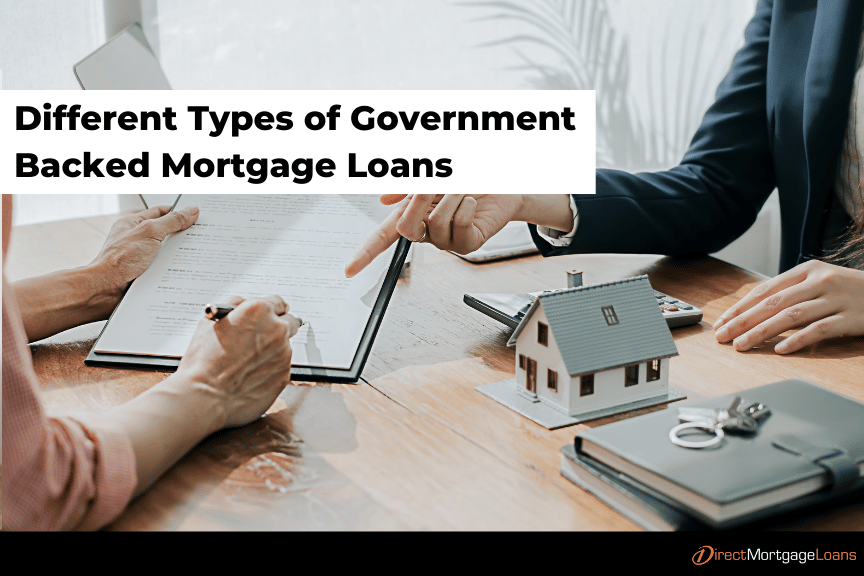Conventional Mortgage Loans: The Preferred Selection for Homebuyers
Conventional Mortgage Loans: The Preferred Selection for Homebuyers
Blog Article
The Necessary Variables to Think About When Picking Between Fixed-Rate and Variable-rate Mortgage Finances
When assessing mortgage choices, debtors face a crucial choice in between fixed-rate and adjustable-rate finances, each offering prospective challenges and distinctive advantages. Key considerations such as rate of interest stability, predictability in monthly payments, and the ramifications of prospective rate modifications can significantly influence long-term monetary wellness. Moreover, comprehending the anticipated period of homeownership and the total price of borrowing can form one's strategy. As these elements link with individual financial circumstances and take the chance of tolerance, the effects of this choice may not be as uncomplicated as they appear. What subtleties should be focused on in this crucial decision-making procedure?
Rate Of Interest Security
When choosing a home mortgage, comprehending rate of interest rate security is important for informed decision-making. Rate of interest can considerably influence the total cost of a mortgage, and acknowledging the nature of these rates is necessary for customers. Fixed-rate home mortgages offer the benefit of constant month-to-month settlements over the life of the finance, securing consumers from market fluctuations. This stability enables home owners to intend their funds with better assurance, as they will certainly not be influenced by climbing rates of interest.
On the various other hand, adjustable-rate home loans (ARMs) start with lower preliminary rates that might change occasionally based on market conditions. While this can result in lower repayments at first, it additionally presents unpredictability, as consumers might encounter raised settlements if interest rates rise. For those thinking about an ARM, it is important to examine the probability of rate modifications, the capacity for repayment increases, and the length of the initial fixed-rate duration.
Inevitably, the selection in between fixed-rate and adjustable-rate home mortgages depends upon private danger tolerance and financial circumstances. Understanding rates of interest security assists customers make informed choices that straighten with their long-lasting monetary goals.
Monthly Settlement Predictability
While consumers usually focus on rate of interest price security, the predictability of regular monthly settlements is similarly important in the home loan choice procedure (Conventional mortgage loans). Month-to-month payment predictability plays a crucial duty in budgeting and financial planning, as it directly impacts a house owner's capital and general financial health
Fixed-rate home mortgages supply a constant month-to-month repayment throughout the life of the financing, allowing debtors to anticipate and plan their expenses effectively. This stability can be particularly useful for novice buyers or those on a fixed revenue, as it eliminates the unpredictability related to changing settlements.
On the other hand, variable-rate mortgages (ARMs) usually include lower preliminary settlements that can change gradually, leading to prospective irregularity in month-to-month obligations. While at first enticing, this unpredictability can complicate monetary preparation, especially if customers do not make up future price adjustments.
Possible Rate Changes
In the world of adjustable-rate mortgages (ARMs), possible price changes represent a significant aspect that consumers have to carefully think about. Unlike fixed-rate mortgages, where the interest rate stays unmodified for the life of the funding, ARMs are identified by rising and fall rate of interest that are tied to market indices. This variability can lead to substantial changes in regular monthly repayments, affecting from this source the debtor's monetary planning and budgeting.
Debtors need to be aware of the margin and index made use of to determine these adjustments, as they straight influence future passion prices. Additionally, ARMs often consist of caps that limit just how much the passion rate can raise at each modification and over the life of the lending, which can provide some degree of security versus drastic price walkings.
Understanding these prospective changes is critical for borrowers, as they straight influence long-term repayment obligations. As a result, evaluating personal financial circumstances and run the risk of tolerance is crucial when deciding whether an ARM lines up with one's monetary objectives.
Financing Term Considerations
Loan term considerations play a critical role in the decision-making process for consumers choosing in between adjustable-rate and fixed-rate mortgages. The size of the lending term considerably impacts monthly settlements, passion prices, and general monetary planning.

Eventually, debtors need to evaluate their personal conditions, economic goals, and market conditions when weighing the implications of find more information lending term choices within each home mortgage kind.

Total Cost of Loaning
The total expense of loaning is a critical aspect that can considerably affect a borrower's selection between fixed-rate and adjustable-rate home loans. Fixed-rate mortgages supply predictable monthly settlements, as the rate of interest price stays consistent throughout the funding term. This predictability can lead to reduced total expenses, especially in a secure or declining rate of interest environment. Customers can spending plan effectively, knowing their repayments will certainly not fluctuate.
Alternatively, variable-rate mortgages (ARMs) usually begin with lower initial rates, resulting in decreased in advance expenses. Nevertheless, these prices can boost after a first duration, causing possibly greater long-lasting expenses. Borrowers must consider the frequency and extent of rate modifications, in addition to the general financing period, to precisely examine the monetary implications.
Moreover, the total price of borrowing encompasses not only rates of interest yet additionally charges and other associated prices, such as shutting expenses and insurance coverage (Conventional mortgage loans). For that reason, when assessing mortgage alternatives, consumers must carry out a complete expense evaluation over the life of the funding. By doing so, they can make an enlightened decision that aligns with their economic goals and risk resistance
Verdict
In final thought, selecting in between adjustable-rate and fixed-rate mortgage demands careful consideration of a number of vital elements. Rates of interest security and monthly repayment predictability are paramount for effective budgeting, while the capacity for rate changes in ARMs presents financial uncertainty. Furthermore, the expected duration of homeownership and the total expense of borrowing, consisting of rate of interest rates and linked charges, have to align with private monetary circumstances and run the risk of resistance. Such an extensive evaluation will certainly facilitate informed decision-making in home loan option.
Key considerations such as interest rate stability, predictability in monthly payments, and the implications of potential rate adjustments can substantially affect long-lasting monetary health and wellness. Interest rates can considerably affect the total price of a home loan, and recognizing the nature of these prices is important for debtors. Unlike fixed-rate mortgages, where the review rate of interest price continues to be the same for the life of the loan, ARMs are identified by rising and fall passion prices that are connected to market indices. Additionally, ARMs often consist of caps that restrict how a lot the rate of interest rate can increase at each change and over the life of the funding, which can offer some level of defense against extreme rate walks.
Rate of interest rate security and regular monthly payment predictability are extremely important for efficient budgeting, while the possibility for rate changes in ARMs presents financial unpredictability.
Report this page